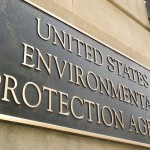The National Academies, a primarily government funded 6,300 member organization of the country’s top scientists, published a report this week denouncing the EPA for its use of bad science to justify its conclusions. The National Research Council (NRC), one of four organizations that makes up the National Academies (the other three being the National Academy of Sciences, the National Academy of Engineering, and the Institute of Medicine), found a litany of deficiencies across multiple offices that undermines EPA’s claims of scientific integrity.
According to the report, EPA science suffers from:
- Lack of transparency – “The lack of transparency and the inconsistencies raise questions about the quality of the approaches used.”
- Lack of consistency – “Inconsistencies were found in the methods used to identify studies for consideration.”
- Insufficient documentation – “EPA’s evaluation provided insufficient documentation of the analyses that led to the conclusions.”
- Failure to justify conclusions – “EPA’s conclusions are not well supported… A higher standard of evaluation is required.”
- Improper use of scientific method – “No clear description of a strategy or criteria for assessing the studies used in the evaluation… Methods that provide a more systematic approach and greater transparency are necessary.”
Despite vocal EPA proclamations to the contrary – notably chief Gina McCarthy’s recent comment that science is the EPA’s “North Star” – the quality of the EPA’s science has long been considered questionable and agenda driven. EPA consistently ignores cost/benefit analysis, bullies scientists, and perverts the peer review process to further its agenda.
“A better astrological term for the EPA’s science would be a black hole,” said U.S. Sen. David Vitter (R-La.). “The EPA keeps much of their science completely secret, and what science they do submit for independent analysis is again described by the National Academy as inconsistent, insufficient and lacking transparency.”





